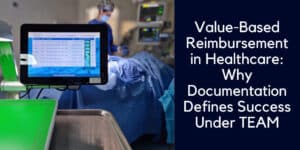Why Surgical Data Quality Is the New Priority
As hospitals shift toward value-based care, the quality of data driving clinical and financial decisions has become more critical than ever. One of the most overlooked—but essential—components of this transformation is surgical supply data. When purchasing decisions are based on value analysis, those decisions must be backed by complete, reliable, and real-time data.
It’s no longer enough to estimate product usage or rely on partial records. Hospitals that want to reduce costs while maintaining excellent care must build a strong data foundation—starting with the operating room.
Recent research supports this shift. A 2024 study published in Frontiers in Public Health found that successful implementation of value-based healthcare models relies heavily on accurate clinical and operational data, which improves outcomes, patient experience, and sustainability in care delivery.

Data at the Core of Value Analysis Committees
Value Analysis Committees (VACs) are the gatekeepers of supply decisions in modern healthcare. These multi-disciplinary teams evaluate products based on cost, safety, outcomes, and overall value. Their work is essential in helping health systems identify lower-cost, better-performing alternatives.
But for VACs to function effectively, they depend on precise surgical supply data. For instance, comparing the cost of different items used during identical surgeries requires reliable case-by-case documentation. Understanding which physicians use which products—and how those choices affect patient outcomes—can only happen when data collection is accurate and consistent.
When surgical records are incomplete or missing entire categories of inventory like consignment or trunk stock, the resulting analysis is flawed. Poor data can misguide purchasing strategy, create waste, and even compromise patient care.
The Hidden Gaps in OR Documentation
Despite their best efforts, many hospitals still rely on outdated or manual methods to track surgical inventory. Nurses are often responsible for scanning barcodes or entering product details manually—a time-consuming process prone to error.
Important items may be forgotten, mislabeled, or never recorded at all—especially when they fall outside the traditional stockroom system. Bill-only items, off-contract supplies, or implants brought in directly by reps are frequently missed. These gaps create blind spots in the data, making it difficult for administrators and procurement teams to get a full picture of what’s happening in the OR.
Turning Surgical Supply Data into a Strategic Advantage
To thrive in a value-based environment, hospitals must start treating surgical supply data as a strategic asset. This means capturing every product used, ensuring seamless integration with the EHR, and making that data available for real-time analysis.
When done right, this kind of transparency empowers leadership teams to make confident, evidence-based decisions. It becomes easier to compare costs across physicians, evaluate product performance, and make choices that benefit both patients and the bottom line.
A New Standard: AI-Powered Surgical Supply Data Capture
At IDENTI, we’ve developed a solution that removes the burden of documentation from clinical teams. Our Snap&Go system uses AI camera technology to record every item used in surgery—automatically, accurately, and in real time.
This means no more missed entries or inconsistent reporting. Whether it’s owned stock, consignment, or off-contract items, everything is documented with 100% integrity and fed directly into the hospital’s existing systems. For the first time, hospitals can have a complete and trustworthy view of their surgical inventory without disrupting workflows.
The Future of OR Data Starts Now
Hospitals looking to reduce costs, improve outcomes, and excel in value-based care must start with better data. High-quality surgical supply data is the backbone of smarter purchasing, more efficient operations, and stronger financial performance.
If your organization is ready to transform its OR documentation and bring true transparency to the surgical supply chain, we’re here to help. Our AI-driven platform is already redefining what’s possible in the OR—one case at a time.






